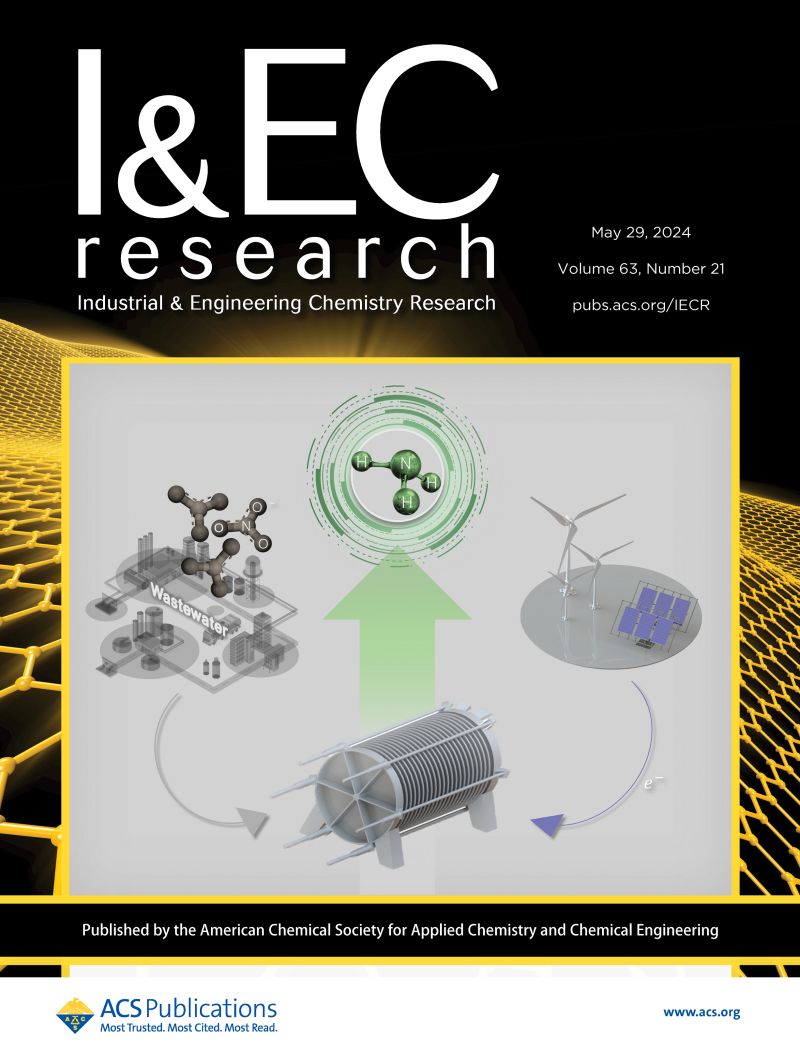Regeneration of Spent Iron Molybdate Catalysts via Ammonia Leaching for Catalytic Methanol Oxidation to Formaldehyde
IF 3.8
3区 工程技术
Q2 ENGINEERING, CHEMICAL
引用次数: 0
Abstract
The iron molybdate (FeMo) catalyst, due to its excellent catalytic activity, has been widely used in the oxidation of methanol to produce formaldehyde, while the partial loss of active molybdenum species leads to a short lifetime. The spent FeMo catalyst is generally discarded as solid waste; however, it still contains a significant amount of molybdenum species. Thus, the recovery and regeneration of molybdenum are greatly needed, yet it remains a great challenge. In this study, ammonia leaching was applied to recover molybdenum species from the spent FeMo catalyst, achieving a high recovery efficiency of 95.3%. Based on the results from XRD, Raman, and UV–vis analyses, the spent FeMo catalyst was found to consist of MoO3, Fe2(MoO4)3, and segregated FeOx, and then, a possible process for Mo leaching was proposed: Mo species leached rapidly from MoO3 at low pH values (<6.3), followed by leaching from Fe2(MoO4)3 at pH > 6.3. Meanwhile, segregated FeOx remained completely insoluble. Correspondingly, Mo species were leached as Mo3O102–, MoO42–, and Mo7O246–, which depend on the pH values during the leaching process. Finally, the leached Mo species were applied to prepare fresh FeMo catalysts for methanol oxidation. It showed 99.9% methanol conversion and 89.3% formaldehyde selectivity, which was comparable to that over the industrial FeMo catalyst. It also showed excellent catalytic stability in an ∼510 h continuous life test. These findings offer a potential pathway for large-scale industrial recovery and reuse of spent FeMo catalysts and other molybdenum-containing catalysts.

用氨浸法再生废钼酸铁催化剂催化甲醇氧化制甲醛
钼酸铁(FeMo)催化剂由于其优异的催化活性,在甲醇氧化制甲醛中得到了广泛的应用,但活性钼种的部分损失导致其寿命较短。用过的FeMo催化剂一般作为固体废物丢弃;然而,它仍然含有大量的钼种。因此,钼的回收和再生是非常必要的,但这仍然是一个很大的挑战。本研究采用氨浸法从废FeMo催化剂中回收钼,回收率高达95.3%。XRD、Raman和UV-vis分析结果表明,废FeMo催化剂由MoO3、Fe2(MoO4)3和分离的FeOx组成,提出了Mo浸出的可能过程:低pH (<6.3)条件下,MoO3快速浸出Mo, pH >条件下,Fe2(MoO4)3浸出Mo;6.3. 与此同时,隔离的FeOx仍然是完全不可溶的。相应的,Mo在浸出过程中以Mo3O102 -、MoO42 -和Mo7O246 -的形态出现,其形态取决于浸出过程中的pH值。最后,将浸出的Mo物种用于制备新型甲醇氧化催化剂。甲醇转化率为99.9%,甲醛选择性为89.3%,与工业用FeMo催化剂相当。在~ 510 h的连续寿命测试中也表现出优异的催化稳定性。这些发现为大规模工业回收和再利用废FeMo催化剂和其他含钼催化剂提供了潜在的途径。
本文章由计算机程序翻译,如有差异,请以英文原文为准。
求助全文
约1分钟内获得全文
求助全文
来源期刊

Industrial & Engineering Chemistry Research
工程技术-工程:化工
CiteScore
7.40
自引率
7.10%
发文量
1467
审稿时长
2.8 months
期刊介绍:
ndustrial & Engineering Chemistry, with variations in title and format, has been published since 1909 by the American Chemical Society. Industrial & Engineering Chemistry Research is a weekly publication that reports industrial and academic research in the broad fields of applied chemistry and chemical engineering with special focus on fundamentals, processes, and products.
 求助内容:
求助内容: 应助结果提醒方式:
应助结果提醒方式:


